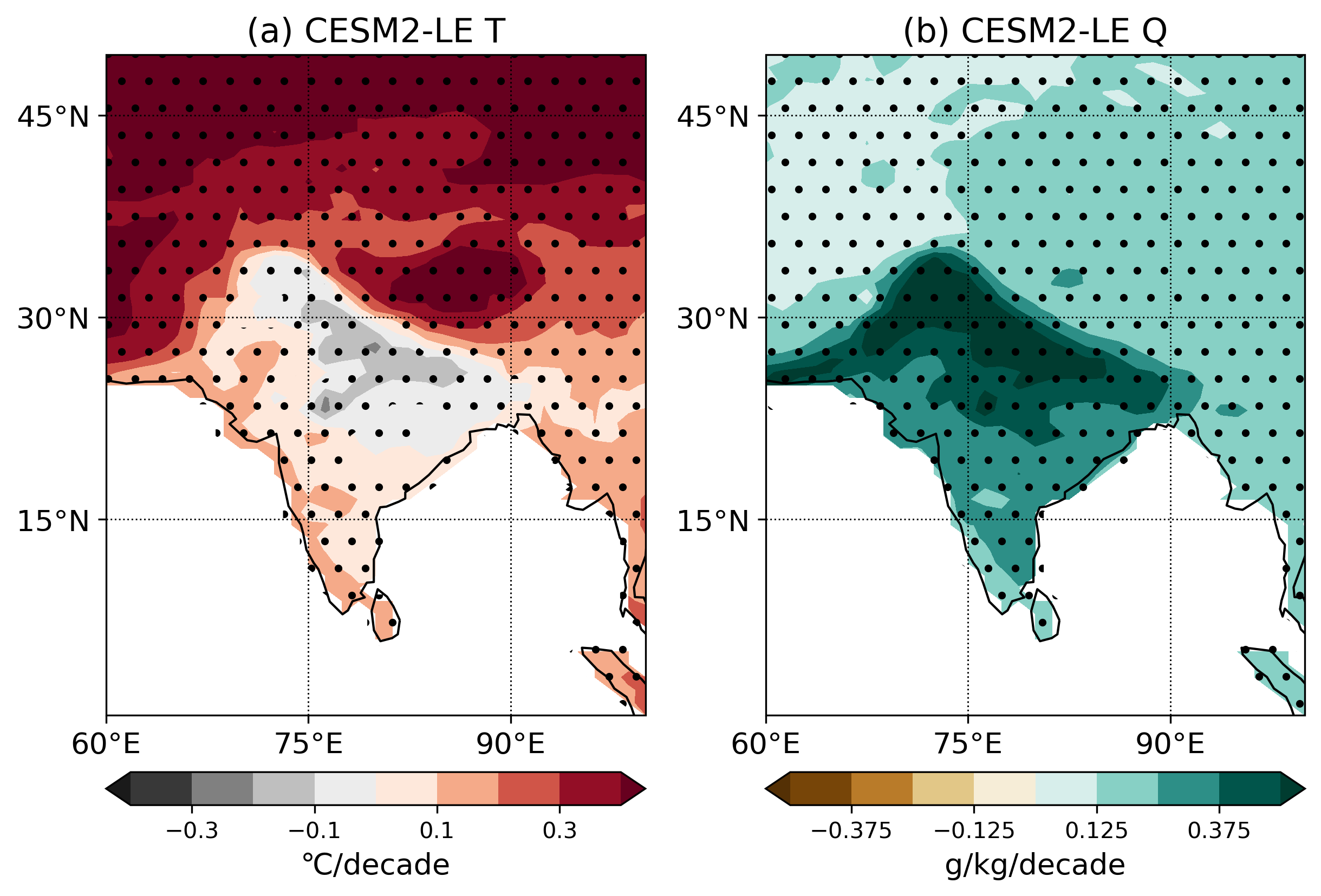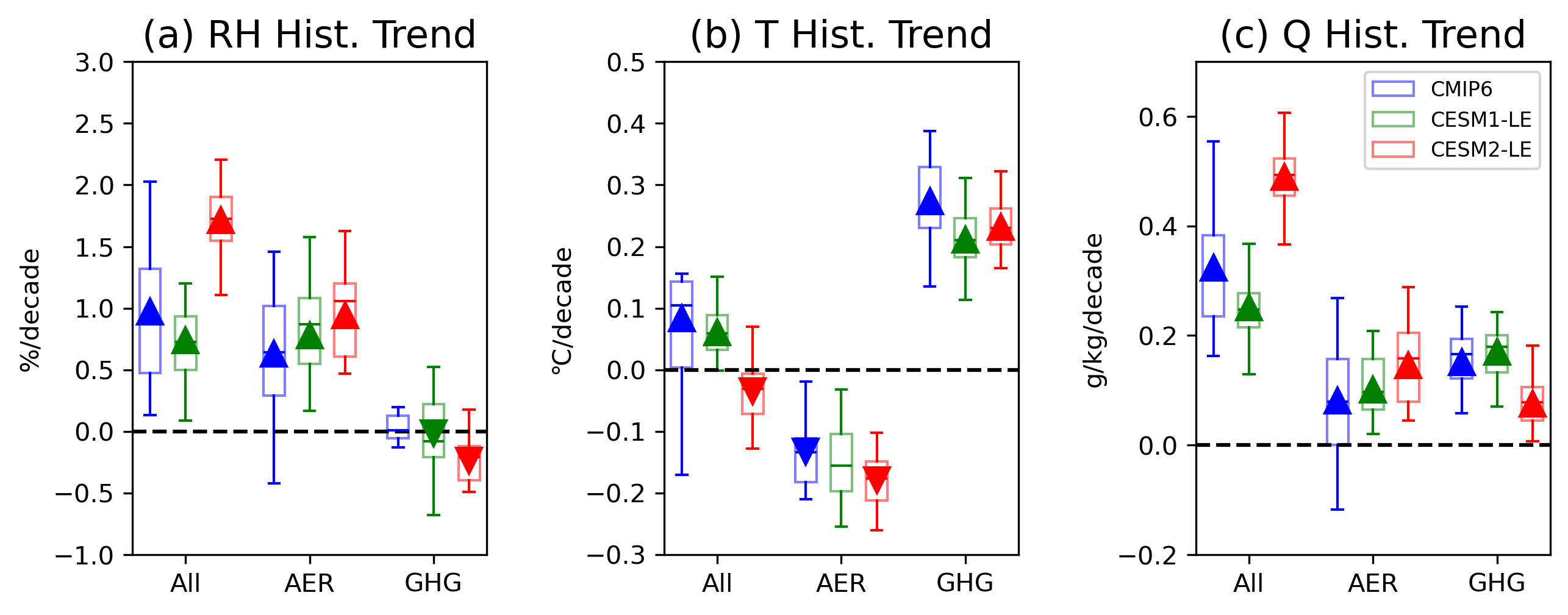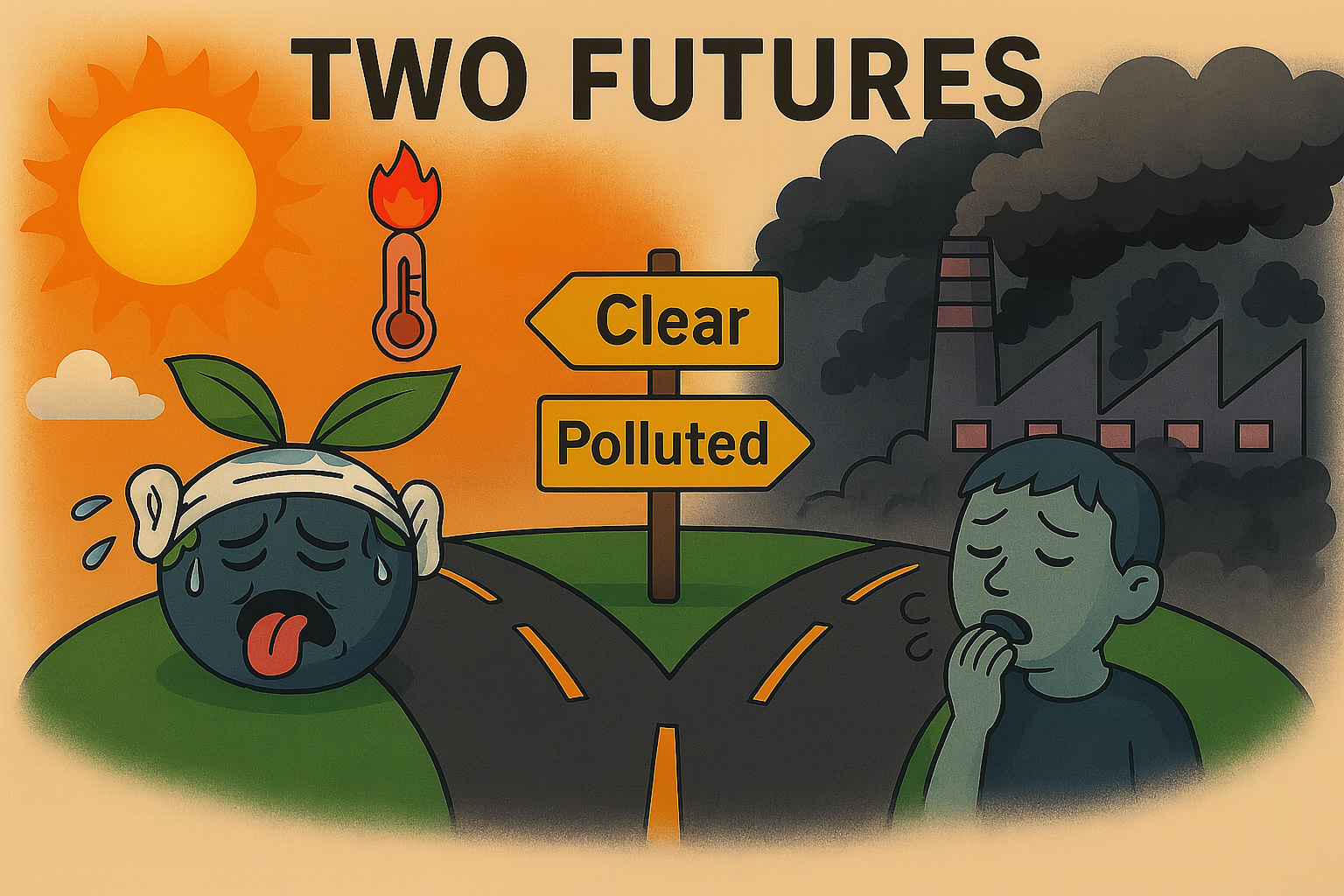The Deadly Choice Between Clean Air and Survivable Heat
Published in Earth & Environment

A Tale of Unintended Consequences in the World's Most Populated Plain
Imagine you're standing in a field in northern India on a sweltering summer day. The air is thick with smog, visibility is poor, and your lungs burn with each breath. Logic tells you that all this pollution must be making the heat unbearable.
You'd be wrong.
In one of the most counterintuitive discoveries in recent climate science, researchers have found that the very pollution choking the Indo-Gangetic Plain—home to nearly 900 million people—has actually been keeping temperatures lower than they would otherwise be. But here's the kicker: while the air stayed relatively cool, it became dangerously more humid, as shown in the figure below. And in the cruel mathematics of human survival, that humidity might be more lethal than the heat itself.

Climate models reveal the stark contrast: while greenhouse gases alone would have driven both temperature and humidity up across the Indo-Gangetic Plain since 1961, the actual observed trends show something far more troubling—humidity rising while temperatures remain surprisingly stable.
The Warming That Wasn't
For decades, scientists have puzzled over what they call India's "global warming hole." While the rest of the world has. been heating up at an alarming pace, this vast agricultural heartland stretching from Pakistan to Bangladesh has warmed much more slowly. Some areas have barely warmed at all.
The culprit? Tiny particles of pollution called aerosols, floating in the atmosphere like microscopic umbrellas, blocking sunlight before it can reach the ground. It's a phenomenon that would make any climate denier's heart sing-except for one problem: the cure might be worse than the disease.
When Your Sweat Stops Working
Here's what most people don't understand about heat and humidity: your body doesn't care what the thermometer says. It cares about whether your sweat can evaporate. When the air is thick with moisture, sweat just sits on your skin like a useless film. Your internal cooling system breaks down. Your core temperature rises. In extreme cases, you die.
Scientists measure this deadly combination using something called wet-bulb temperature—essentially, how hot it feels to a wet thermometer. When wet-bulb temperatures hit 95°F (35°C), even a healthy person sitting in the shade with unlimited water will overheat and die within hours. It's a hard biological limit, as unforgiving as the vacuum of space.
The Indo-Gangetic Plain hasn't reached that threshold yet. But it's getting uncomfortably close, and the humidity is rising faster than anyone expected.
The Pollution Paradox
The mechanism behind this humidity surge reads like something from a climate fiction novel, except it's disturbingly real. Here's how it works:
Pollution particles dim the sun, cooling the surface. Cooler surfaces mean less evaporation from rivers, lakes, and soil. But here's the twist—there's still plenty of moisture in the air from other sources. With less evaporation to balance the moisture budget, humidity climbs.
It's like turning down the heat in a bathroom while leaving the shower running. The air doesn't get hotter, but it gets a lot more humid.

The Devil's Bargain
This creates what researchers are calling this a "policy dilemma"—a polite term for an impossible choice. Clean up the air pollution (which we absolutely must do for public health), and you remove the atmospheric sunscreen that's been keeping temperatures down. Suddenly, the region could face the full brunt of global warming, with temperatures potentially jumping several degrees in just a few decades.
But keep the pollution, and you condemn millions to respiratory disease, lung cancer, and premature death, all while the humidity creeps ever higher toward that deadly threshold.
Two Futures, Both Frightening
The data tells a story of two possible futures, both sobering. In one scenario, we continue pumping aerosols into the atmosphere. Temperatures stay relatively stable, but humidity climbs relentlessly. In the other, we clean up the air and temperatures soar, potentially making the region uninhabitable for a different reason.
Climate models show these competing forces pulling in opposite directions like a cosmic tug-of-war. Greenhouse gases push temperatures up and can actually lower relative humidity as the air warms and expands. Aerosols push temperatures down but trap moisture, pushing humidity up. The result depends on which force wins.

Beyond the Thermometer
This research shatters our simple mental models of climate change. We've been trained to think that warmer equals worse, cleaner equals better. But the atmosphere doesn't follow our moral intuitions. It follows physics, and physics can be cruel.
The story of the Indo-Gangetic Plain is a preview of the complex, interconnected challenges awaiting us as we try to untangle the climate crisis. It's not enough to reduce carbon emissions or clean up air pollution in isolation. We need to think systemically about how these changes ripple through the atmosphere, affecting everything from monsoon patterns to human survival.
The Way Forward
The researchers behind this study aren't suggesting we abandon efforts to clean up the air—that would be scientific malpractice and moral cowardice. Instead, they're calling for what they term "smarter, more holistic policies" that account for these interconnected effects.
That might mean coupling air quality improvements with massive investments in air conditioning, urban cooling, and early warning systems. It might mean rethinking agricultural practices and work schedules to account for rising humidity. It certainly means preparing for climate impacts that don't fit our neat categories of "hot" or "cold," "clean" or "dirty."
The Lesson
In the end, India's humidity paradox is a story about hubris—our belief that we understand the systems that are far more complex than we know. Every action has consequences, and some may be worse than the problem itself.
The people of the Indo-Gangetic Plain are about to find out.
Follow the Topic
-
Communications Earth & Environment

An open access journal from Nature Portfolio that publishes high-quality research, reviews and commentary in the Earth, environmental and planetary sciences.
Related Collections
With Collections, you can get published faster and increase your visibility.
Geology of the Moon
Publishing Model: Hybrid
Deadline: Jan 31, 2026
Archaeology & Environment
Publishing Model: Hybrid
Deadline: Mar 31, 2026

Please sign in or register for FREE
If you are a registered user on Research Communities by Springer Nature, please sign in
Thank you for explaining this topic so clearly. Even as a layman, I was able to follow you easily.
Thanks so much! Glad to hear it was easy to follow. Appreciate you reading!